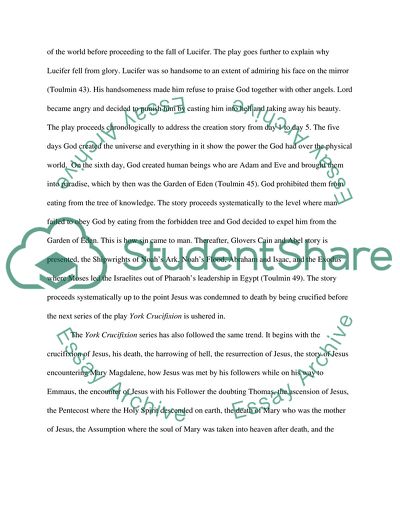Cite this document
(The York Mystery Plays Essay Example | Topics and Well Written Essays - 2500 words, n.d.)
The York Mystery Plays Essay Example | Topics and Well Written Essays - 2500 words. Retrieved from https://studentshare.org/english/1814823-with-reference-to-atleast-two-of-the-corpus-christi-plays-weve-studied-york-creation-play-chester-adam-and-eve-play-etc-examine-the-ways-in-which-the-literary-structure-of-the-plays-stanza-forms-repetition-alliteration-etc-suit-large-scale
The York Mystery Plays Essay Example | Topics and Well Written Essays - 2500 words. Retrieved from https://studentshare.org/english/1814823-with-reference-to-atleast-two-of-the-corpus-christi-plays-weve-studied-york-creation-play-chester-adam-and-eve-play-etc-examine-the-ways-in-which-the-literary-structure-of-the-plays-stanza-forms-repetition-alliteration-etc-suit-large-scale
(The York Mystery Plays Essay Example | Topics and Well Written Essays - 2500 Words)
The York Mystery Plays Essay Example | Topics and Well Written Essays - 2500 Words. https://studentshare.org/english/1814823-with-reference-to-atleast-two-of-the-corpus-christi-plays-weve-studied-york-creation-play-chester-adam-and-eve-play-etc-examine-the-ways-in-which-the-literary-structure-of-the-plays-stanza-forms-repetition-alliteration-etc-suit-large-scale.
The York Mystery Plays Essay Example | Topics and Well Written Essays - 2500 Words. https://studentshare.org/english/1814823-with-reference-to-atleast-two-of-the-corpus-christi-plays-weve-studied-york-creation-play-chester-adam-and-eve-play-etc-examine-the-ways-in-which-the-literary-structure-of-the-plays-stanza-forms-repetition-alliteration-etc-suit-large-scale.
“The York Mystery Plays Essay Example | Topics and Well Written Essays - 2500 Words”, n.d. https://studentshare.org/english/1814823-with-reference-to-atleast-two-of-the-corpus-christi-plays-weve-studied-york-creation-play-chester-adam-and-eve-play-etc-examine-the-ways-in-which-the-literary-structure-of-the-plays-stanza-forms-repetition-alliteration-etc-suit-large-scale.


